Among the main desires of businessmen and production managers has always been the monitoring and centralized control of the production cycle. While the need is more than legitimate, it has never been easy to satisfy. To obtain a real-time picture of the factory’s performance, it must generate, transmit, optimize and allow the display of large volumes of information from all the elements that contribute to the production cycle, and in particular by machinery.
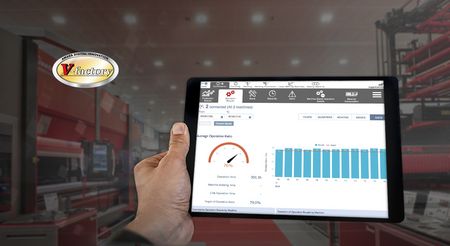
There are two challenges:
Real-time monitoring of processing and production data is the starting point for process optimization. Without a holistic view of the operation of the factory, any optimization intervention would be based solely on experience and intuition, with related risks.
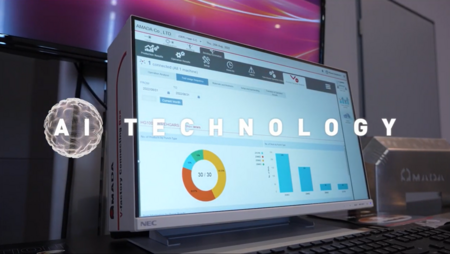
Smart Manufacturing and AMADA vision: V-factory
The Industry 4.0 paradigm has accelerated the digitalization of factory processes. The model aims to:
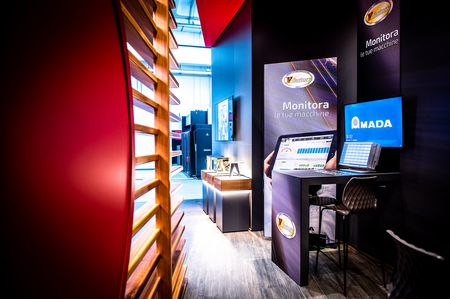
In this context, V-factory, we found the AMADA solution for Industry 4.0. Thanks to the real-time acquisition of data from all connected machines, their management and visualization in intuitive dashboard, V-factory enables the Remote Monitoring of the entire production process. The system detects running activities and shows statistics, consumption, performance, resource utilization, performance, costs and much more, both at system and single machine level. The businessman and the production manager can monitor operations in real time without having to be physically present in the workshop: all they need is a tablet, a PC or a smartphone connected to the Internet.

The V-factory solution and the benefits of remote monitoring
Architecturally, the key elements of the solution are the My V-factory application, provided as a cloud service, and the V-factory hardware device Connecting Box, which enables the interconnection between AMADA and the software platform that captures, analyses and displays data. The cloud delivery simplifies the service activation versus the on-premises paradigm and stands for performance, scalability, security and resilience.
With V-factory a lot of information, until yesterday not accessible or too expensive to obtain,becomes at hand. Think of the operating results of the machines: the system signals the activity in progress, but also the history of the relationship between operating times, standby, setup and alarm.
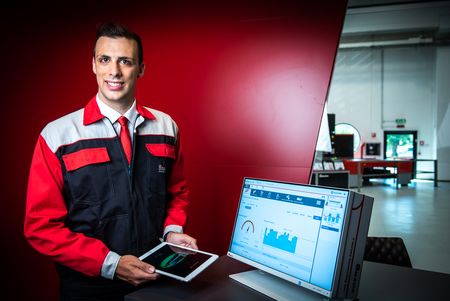
For instance, by deepening the investigation (drill down) it is possible to trace the causes of too long setup times and which activity/process is used to cause them, so as to review the planning to reduce tooling needs and maximize machine uptime.
Speaking of efficiency, and therefore of cost optimization, V-factory allows you to monitor (remotely) the resources used in production processes, especially the material and power ones. We can therefore evaluate the efficiency of use of raw materials on the basis of the amount of parts made, or monitor the energy and gas consumption of assistance on different time segments, so to relate this information to the machines involved and trace the causes. Thus, businessmen and production managers can better predict future needs and implement process optimization strategies that can significantly reduce costs.
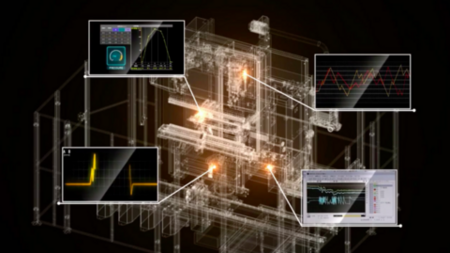
V-factory against machine downtime
V-factory helps enterprises reduce downtime, which is one of the main cost items in manufacturing. As anticipated, the system detects setup and stand-by times, allowing production managers to identify causes and take proactive action to avoid future recurrences. In addition, the platform signals unexpected events through a system of real-time alarms, which are accurately categorized based on the cause and their impact on downtime. This allows you to activate prevention strategies and minimization of downtime.
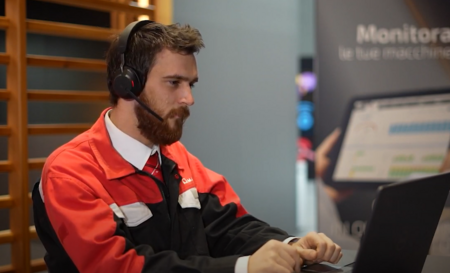
From V-factory to remote support
V-factory activity is not limited to monitoring. Thanks to the acquisition and continuous transmission of data, the system enables remote support, which allows AMADA to support its customers during all production activities.
AMADA technicians receive and analyse the data coming from the machines to offer timely and in-depth support: they can act directly remotely or guide the Customer towards the solution of the problem, also through a video support. In addition, by applying predictive models (AI) to machine data, they can plan maintenance activities before failure occurs and puts productivity at serious risk.